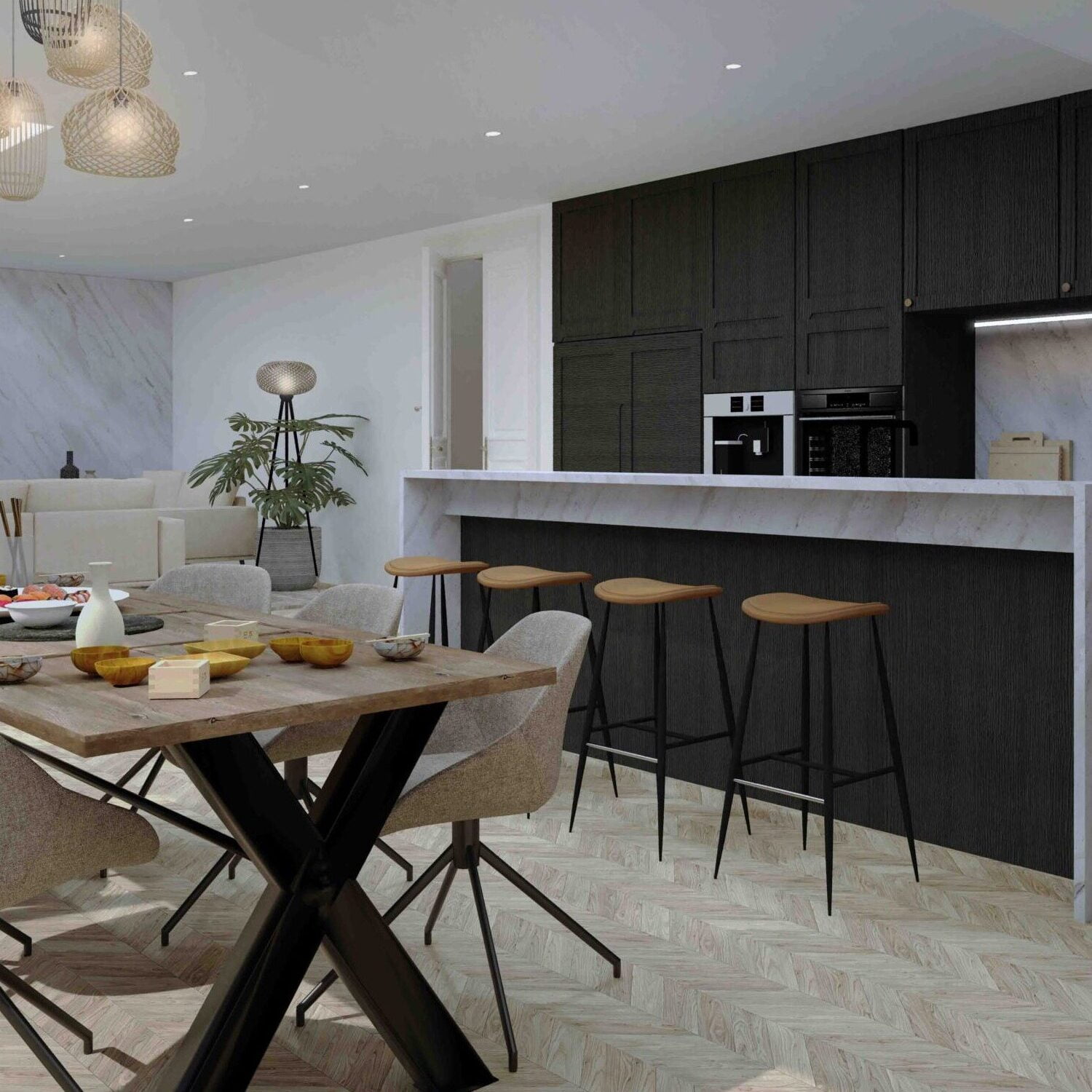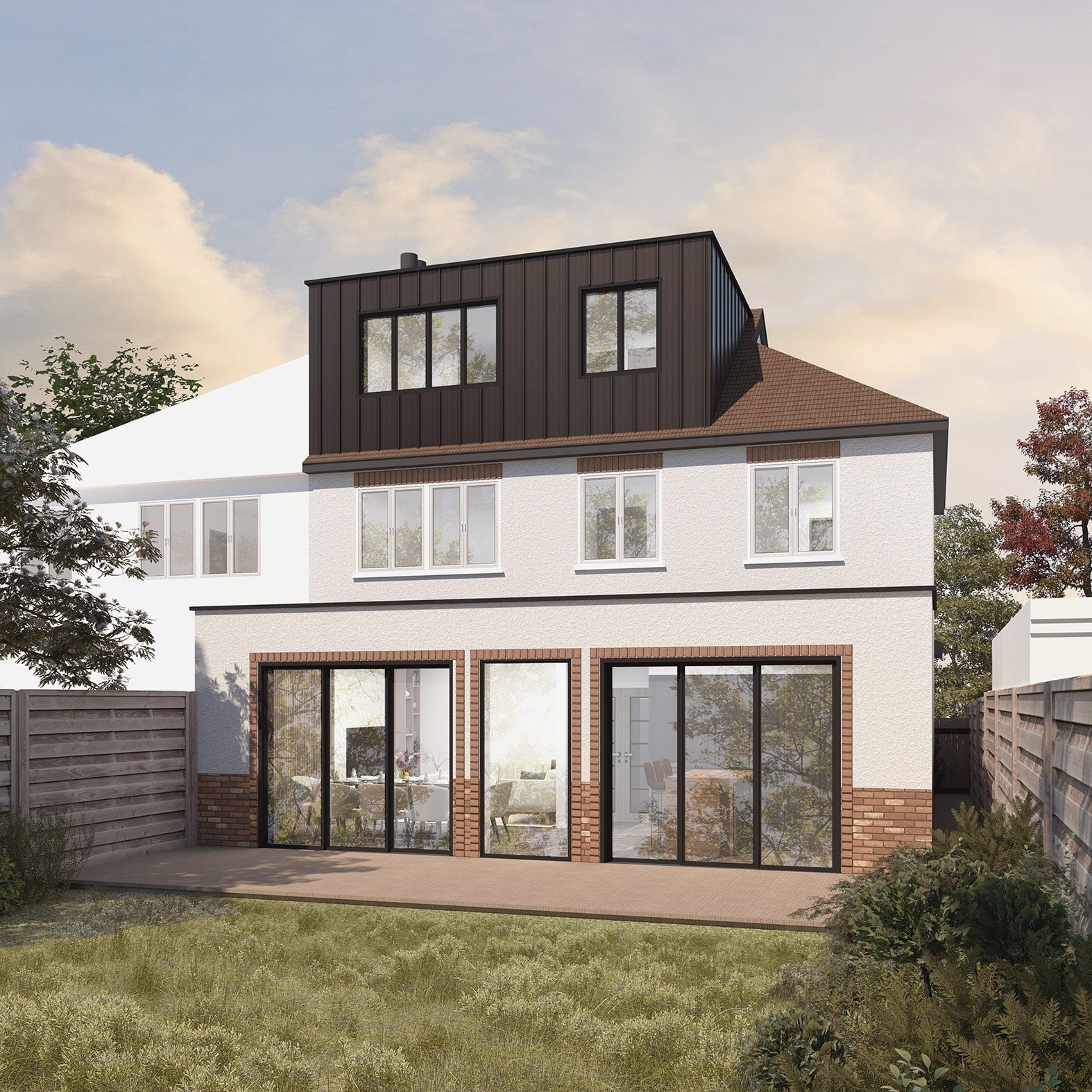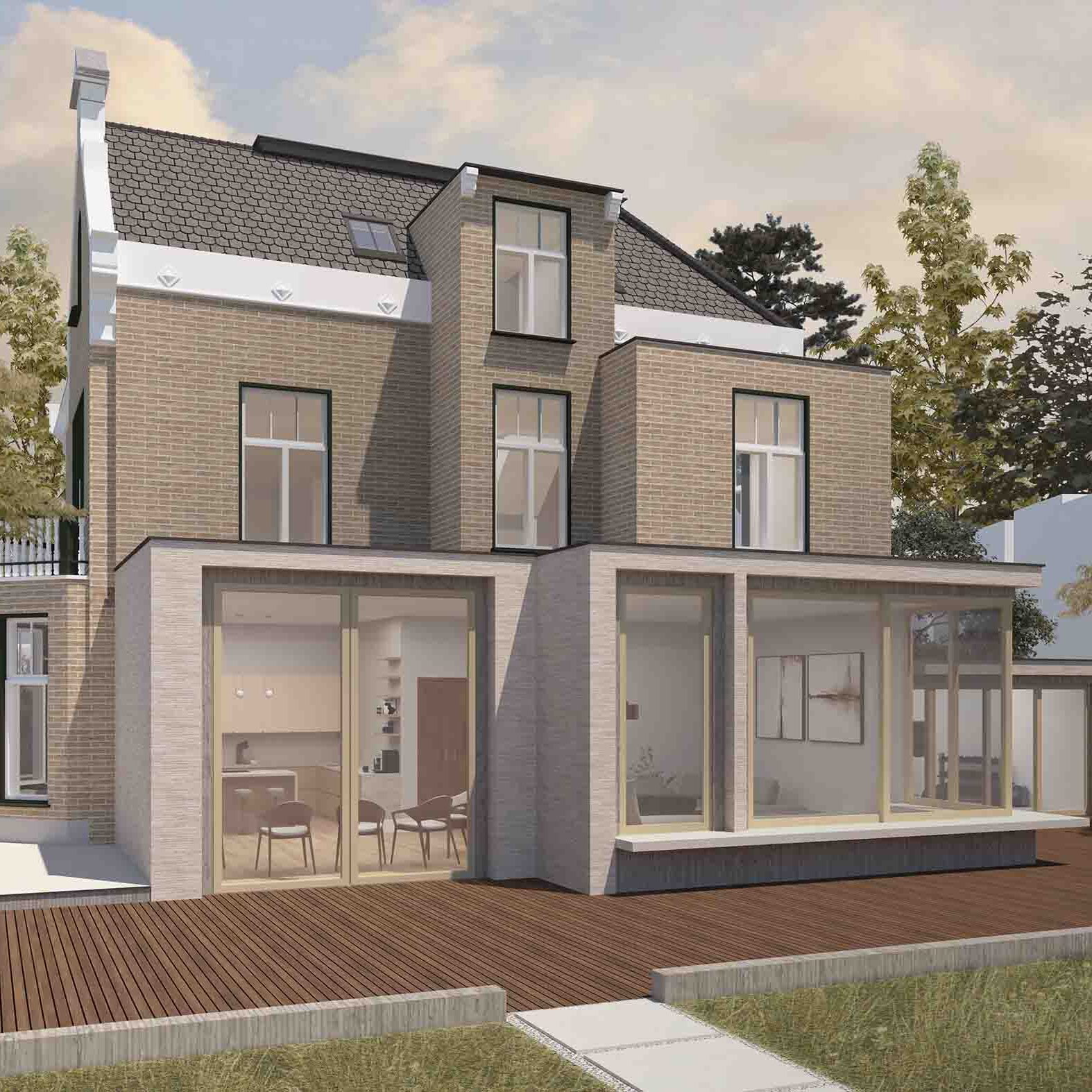Should You Move Out During a Home Extension?
Building an extension is an exciting way to add space, increase the value of your property, and create a home that better suits your needs. Whether you’re extending into the side return, adding a loft conversion, or building a double-storey rear extension, the big question often arises: Should you move out during a home extension?
The short answer? Yes, you probably should.
While it may seem possible to live through a renovation, especially if you’re keen to save on the cost of renting elsewhere, moving out could actually save you time, stress, and money in the long run. Builders will often charge less for projects where the property is vacant due to fewer distractions, easier logistics, and reduced insurance costs.
In This Article
1. Why Moving Out Could Save You Money
2. Costs of Living On-Site
3. How Long Will It Take to Build an Extension?
4. Protecting Your Possessions: Why Storage is a Smart Move
5. Living on a Building Site: The Realities
6. What Type of Work Requires Moving Out?
7. Final Thoughts: Move Out If You Can
Why Moving Out Could Save You Money
Contrary to what you might think, staying in your home during a major house extension can actually lead to higher costs. Here’s why:
- Distractions and Delays
Builders work faster when they have free reign of the property. If they don’t have to worry about working around your schedule, children, or pets, they can be more efficient. In fact, many contractors report that having a client in the house leads to delays. Avoiding this can shave weeks off the overall build time. Move out during a home extension to allow them to maintain momentum and reduce costs. - Logistics and Access
When you live on-site, builders often have to work in sections, ensuring you have access to key areas like the kitchen or bathroom. This adds complexity to the project, requiring extra time and manpower to set up temporary spaces, move materials around safely, and keep dust and noise to a minimum. By moving out, you give them full access, allowing for a smoother, quicker build. - Insurance Costs
If you stay in your property, builders may have to increase their insurance cover, especially regarding liability and public safety. This additional cost is usually passed onto the client. By moving out, you eliminate the need for these higher premiums, and the builders can focus on the project without worrying about safety concerns for your family.

Hip-to-Gable Loft Conversion & Two Storey Side Extension – Scarlet House
How Long Will It Take to Build an Extension?
The timeline for building an extension depends on the size and complexity of the project, but here’s a rough guide to help you plan:
- Single-Storey Rear or Side Return Extension: 3 to 4 months
- Double-Storey Extension: 5 to 6 months
- Loft Conversion: 3 to 5 months
- Kitchen Extension: 4 to 6 months
These timeframes cover the construction phase only rather than design & build, so don’t forget to add time for design, planning permissions and obtaining approvals, which can add another 2 to 6 months depending on your project’s complexity.
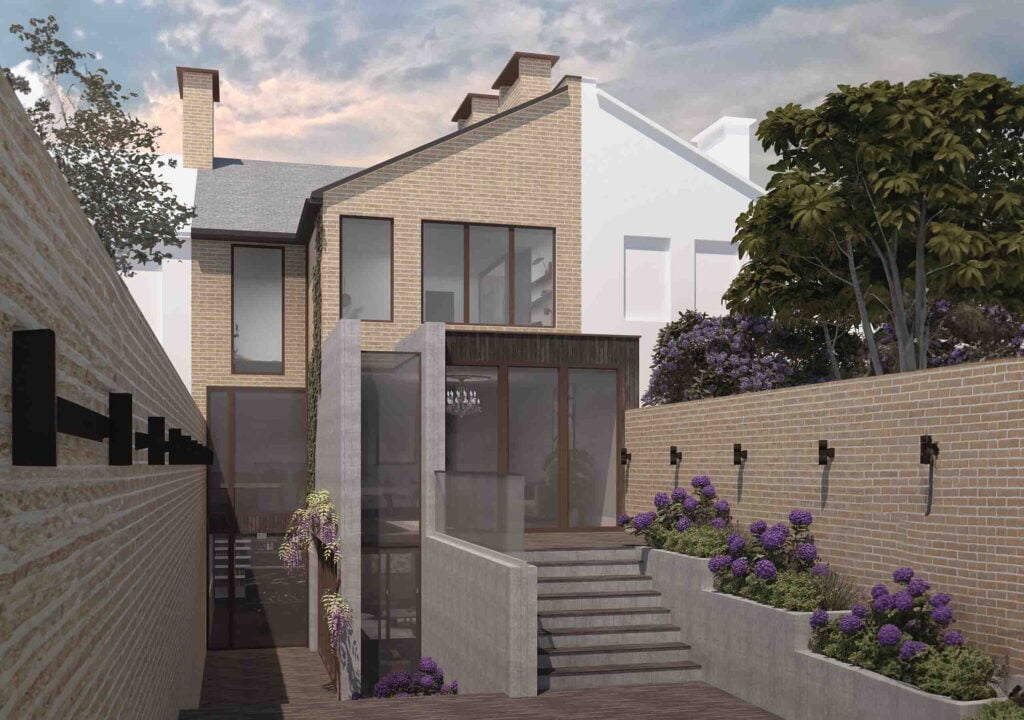
Single Storey Rear Extension & Basement Extension – Monument House
Protecting Your Possessions: Why Storage is a Smart Move
One of the biggest challenges of living through a home extension isn’t just the noise and disruption — it’s the dust. No matter how much plastic sheeting you put up or how carefully you section off areas, dust seems to find its way into every corner of the house. In fact, the issue is so significant that there are government health and safety regulations regarding dust for builders working on-site, requiring them to wear PPE. So, for those without that protection, the impact can be even worse.
Building dust is particularly fine and persistent, coming from materials like plaster, wood, and concrete. It’s not just a nuisance to clean; it can settle into soft furnishings, carpets, and electronics, potentially causing long-term damage. For families with young children, dust can also pose health concerns, as it can trigger respiratory issues and allergies.
For these reasons, it’s highly advisable to put as many of your belongings as possible into storage during a home extension via reputable companies such as Big Yellow Storage or Shurgard Self-Storage. While builders may take precautions to protect your furniture and possessions, they simply can’t guarantee a dust-free environment.
Here’s why storage can be a lifesaver:
1. Prevents Damage
Dust, paint splatters, and accidental knocks are part and parcel of any building project. Large pieces of furniture are at risk of damage if they’re left on-site. Even covered with protective sheeting, the chances of getting dirty or scratched are high. By moving your furniture into storage, you safeguard your possessions and avoid the hassle of deep cleaning everything at the end of the build.
2. Keeps the Space Clear for Builders
Builders need as much space as possible to work efficiently, and cluttered rooms can slow them down. By moving furniture into storage, you free up valuable floor space. A clear room means less time spent moving things around and more time spent building, helping to speed up the project.
3. Reduces Stress for Families with Young Children
If you have young children, the last thing you want is for them to be surrounded by dust and building materials. Clearing unnecessary items not only makes it safer but also gives you one less thing to worry about. The fewer items there are for them to touch, the better.
4. Easier Clean-up After the Build
Once your extension is complete, the clean-up will be simpler if you’ve stored your possessions elsewhere. You won’t have to dust off every surface or deep-clean fabrics. Instead, you can move your belongings back into a clean space and enjoy your newly extended home.
While storage costs are an additional expense, they’re often worth the peace of mind they provide. The alternative could be dealing with damaged furniture or unhealthy living conditions during the build. If moving out entirely isn’t an option, storing your possessions off-site is the next best thing to ensure a smooth renovation process.
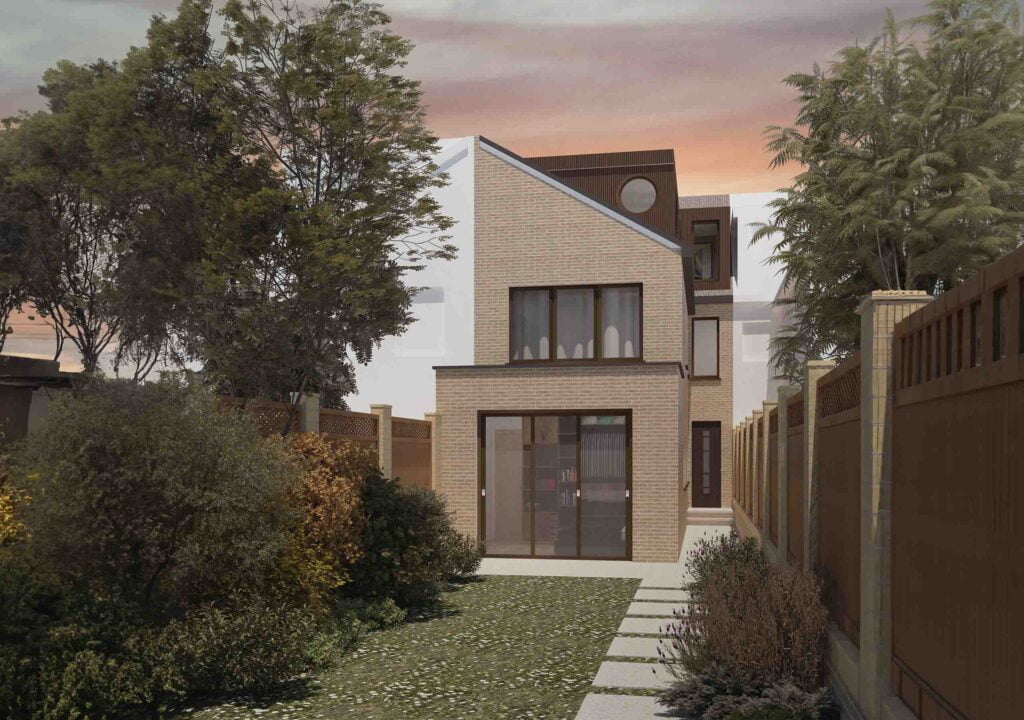
Permitted Development Extensions & Loft Conversion – Petite House
Choosing Not to Move Out During a Home Extension: The Realities
If you decide to stay in your home during an extension, it’s important to prepare for the realities of living on a building site. Builders will do their best to accommodate you, but there will be disruption. Expect noise, dust, and temporary inconvenience. Hot water, electricity, and gas may be turned off periodically. If you’ve ever been on a large camping trip, imagine that — but in your own home!
Top tips for living on-site during an extension instead of choosing to move out during a home extension:
- Use temporary spaces: Talk to your builders about setting up a temporary kitchen or bathroom so you can keep functioning while key areas are out of commission.
- Section off areas: Work with your builder to create barriers between the building site and your living space. Plastic sheeting or temporary walls can help minimise dust and noise.
- Book a holiday: If possible, schedule a holiday or weekend getaway during the worst of the disruption. Demolition or roofing work can be especially messy and loud, so time your break around these phases.
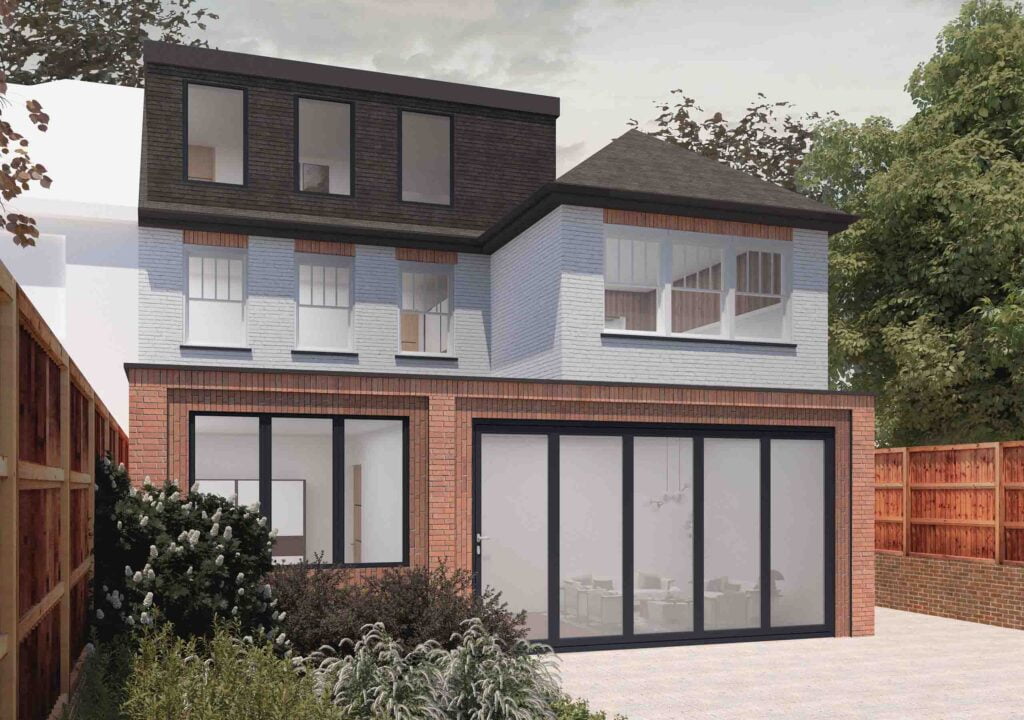
Permitted Development Loft Conversion with Dormer – In & Out House
Costs of Living On-Site
Staying in your home during a build can lead to increased expenses in several ways, and this is why it may be best to move out during a home extension:
Higher Build Costs
Living on-site can significantly raise your overall build costs. Builders may charge more due to logistical complications, distractions, and additional insurance requirements when clients are present. This can offset any savings you might have thought you gained by avoiding rental costs.
Is This Cheaper Than Renting Somewhere?
While moving out incurs rental costs, you must consider the potential savings from having a more efficient build. If staying leads to higher build costs, the difference might not be as significant as you think. Additionally, renting can provide a peaceful environment, which might be worth the extra expense.
Combined Inconveniences
Beyond just financial factors, consider the combined inconveniences of living on-site. The noise, dust, lack of utilities, and general disruption can lead to stress and discomfort. Weighing these inconveniences against the cost of renting is crucial. Sometimes, the peace of mind and comfort of a rental can justify the added expense.
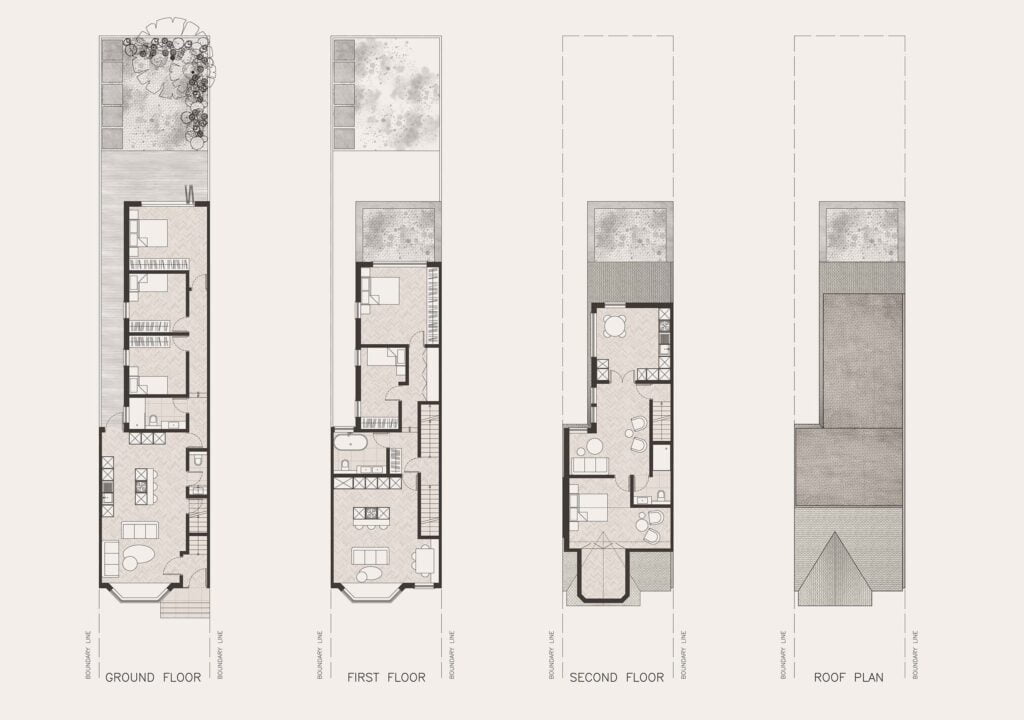
Permitted Development Extension Plans – Petite House
What Type of Work Requires Moving Out?
While some small-scale projects like a small kitchen extension might allow you to stay put, larger extensions, such as double-storey or loft conversions, almost always require moving out. Let’s break it down by project type:
Single-Storey Rear or Side Return Extension
You may be able to stay if the extension is at the back of the house and won’t impact key living areas like the kitchen or bathroom. For example, a modest 3 metre rear extension to enlarge your kitchen. However, if the work affects access to your garden or is particularly disruptive, moving out is still advisable.
Double-Storey Extension
A two-storey extension is more intrusive and often requires significant work to existing areas of the house. You’ll likely lose access to key spaces like bathrooms, bedrooms, and hallways, making it difficult to remain in the property.
Loft Conversion
If you’re converting your loft, moving out can save time and hassle. Builders will need to access the roof, stairs, and upper floors of your house. There may also be structural work involved, which can lead to significant noise, dust, and disruption throughout the house.
Kitchen Extension
Since kitchens are such a central part of daily life, building a kitchen extension can be particularly disruptive. Even if the work is confined to one part of the house, you may lose access to cooking facilities, water, and electricity. In this case, many families choose to move out temporarily or use temporary kitchen setups.
Internal Reconfiguration Only
For projects that only involve internal reconfigurations — such as knocking through walls, moving plumbing or electrical systems, or refurbishing existing rooms — staying in the property may be more feasible. These types of projects tend to be less invasive than full extensions, as they don’t involve as much structural work.
However, it’s important to consider the scale of the project. If it’s a large-scale reconfiguration involving multiple rooms, even internal-only work can become disruptive. Builders may need to turn off utilities, access different areas of the house, and work with heavy machinery, which can make daily life uncomfortable. For smaller projects like small loft conversions, staying put might be fine, but for larger renovations that impact the whole house, moving out could still be worth considering for your sanity and convenience.
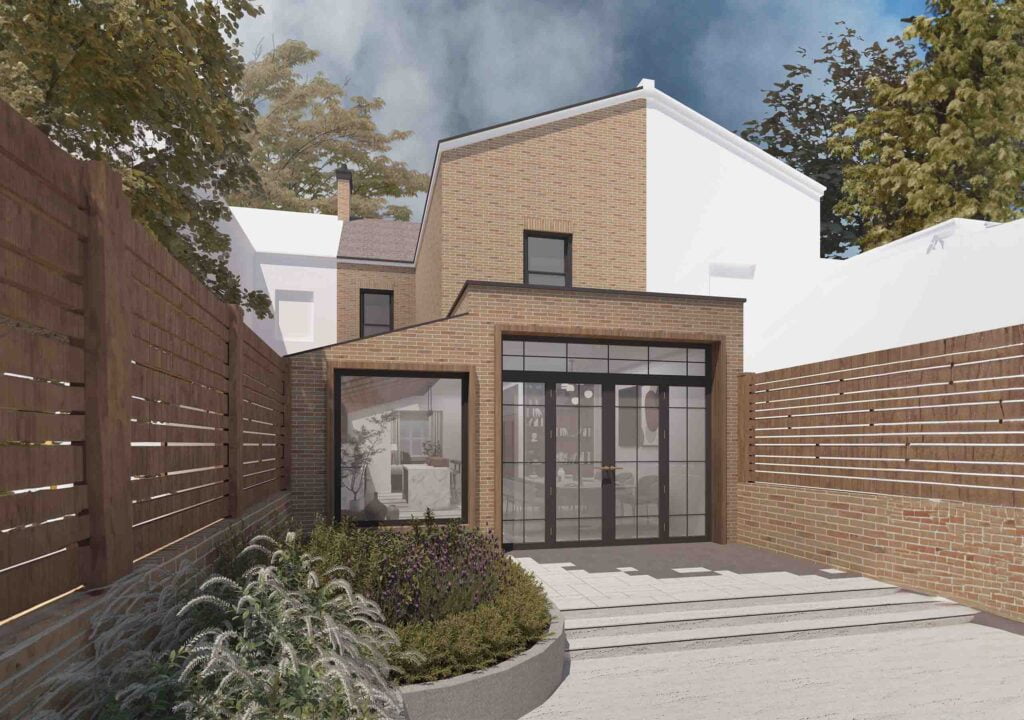
Traditional French Doors House Extension – Walnut House
Final Recommendation: Move Out During a Home Extension
In most cases, moving out during a home extension is the better choice. Not only will it make life easier for your family, but it will also allow your builders to work more efficiently and save on logistical costs. The result? A faster, less stressful build with potential savings on labour and insurance.
Before making your decision, have an open conversation with your builder and design team. They can provide insights into the scope of the work, how it might impact your living situation, and whether it’s possible to section off areas of the house. If budget is your main concern, weigh up the costs of renting somewhere temporary against the potential delays and additional costs of staying put.
Ultimately, moving out during an extension isn’t just about convenience — it could be a smart financial decision too.

